Survival Garden Layout | A Must Read Epic Guide
Last updated: 05/04/20
The pioneering days in early America were epic times; natural calamities happened so many people had to plan ahead to survive. Many had a natural survival garden layout.
I grew up as a Boy Scout and have taken to the motto of “Be Prepared.” This motto has become part of my normal life. I always have a plan and prepare ahead of time. It is a way to insure my well being for my family.
Dire times also occur in our own days and many people need to plan ahead to survive as well.
The panacea for the lack of food is to grow your own but most of us don’t know exactly how, hence the reason for writing up this garden layout guide.
This guide is packed with all the info you need to make a decision as to what is best crops to grow for your survival gardens.
Green thumb Gardener occasionally links to product and/or services offered by vendors to assist you with all your gardening needs. Some of these may be affiliate links, meaning we earn a small commission if items are purchased.
Need a Survival Garden Layout Plan
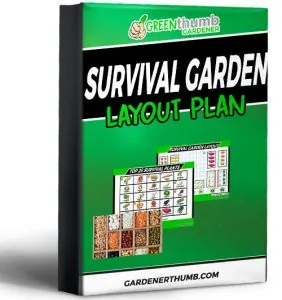
Enter your email below and we will send you a guide to help you with your survival garden layout.
Why is a Grid Garden a Good Choice for a Layout?
The best layout for your survival garden would be the grid garden method.
It produces a bounty of different types of veggies all grown in alternating plots instead of rows.
It is so simple to follow and it saves time, wealth, space and water.
The method is commonly known as Square Foot Gardening and is a perfect method to use especially if you are a newbie at gardening.
It is best to keep things simple in a survival situation.
This method involves the:
- Creation of different sized planting plots of 3’x 6’, 4’x 4’ or 4’ x 3’ which are then divided into 12” squares.
- Construction of planting boxes from rough 1” x 6” timber, making sure deeper boxes for plants like carrots and potatoes are made.
- Placing of planting boxes with regular aisle openings to allow easy access by you (1-3’).
- Filling up the planting boxes with a soil mixture of 4 cubic foot bags of coarse vermiculite, 3.9 cubic foot of compressed peat moss and 4-5 bags of compost.
- Mixing of the components outdoors during a calm day noting that the compressed peat moss will expand when loosened.

This can be adapted to fit in any garden area and is a good template for those just venturing into growing their own food supply.
You could easily tuck away a few squares in strategic spots around your home. This gives you a guide and a template that is adaptable.
Ideal Location for Your Survival Crop Garden
You’ll need to follow these prepared guidelines to ensure that your survival garden starts off without any hitches.
- Know Your Layout: Identify the most suitable area for preparing your garden bed and make it ready for producing food. If your choice is wrong, you will have wasted the seeds you meticulously collected with other plant materials and it may result in success or complete failure
- Sunny Spot: Make sure the selected site is under direct sunlight for 6 to 8 hours per day from morning till about noon and some shade available from trees, houses or other structures for the hottest times of the late afternoon sun.
- Weed-free: The selected site should have very few weeds. You will need to clear them if they do.
- Prep Work: Using a shovel and hoe, begin preparing your garden bed by clearing off the top layer of the soil.
- Root Be Gone: Get stuck into the next few inches below your first dig and get rid of roots and rhizomes of competing plants.
- Soil Mix: Dig down a bit more and combine your mixture of pre-mixed garden soil, compost and peat moss with the clean topsoil in a 1:1 ratio. You’re doing fine so far. If your digging reveals sand and clay material that’s a great start for you and your garden.
- Oxygen Soil Quality: The best soil for your garden bed should be loose and aerated.
- Water: Success also hinges on the ready availability of water and you should ensure that water is readily available.
- Hidden out of Plain View: If possible, the garden site you choose should be located in an area should be hidden from public view to prevent any chance of disturbance and possible trespassing.
- Mulch to Save Water: One of the final touches to your garden should involve the application of a layer of mulch on top of your completed survival garden. Place a layer of brown leaves on your prepared bed for insulation, holding water and protection from weeds and pests.
Seed Starting or Buying Plants
One question that often confronts planters is whether they should start from scratch.
Usually this entails buying seeds and planting them or buy already growing plants or seedlings from shops and transplant them into garden beds.
We must therefore weigh the pros and cons of both methods and identify the best method for planting our survival garden.
Pros and Cons for Seed Planting
There are many pros for starting your survival garden using seeds as indicated below:
- You experience a sense of achievement and inner joy at being responsible for growing a mature plant from a tiny seed.
- Seeds take longer to grow but it’s worth the wait
- The growing season always brings a rush of uncontrollable excitement to begin planting and add life to the land
- Seeds actually cost less and can also cost nothing with a little bit of generosity to neighbors.
- Heirloom Seeds offer an indefinite number of possibilities regarding plant and vegetable types.
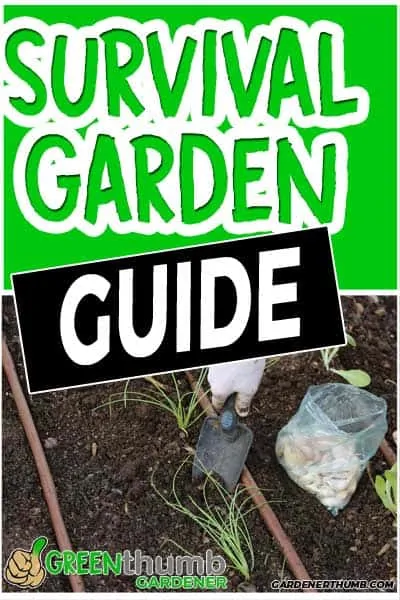
- Some vegetable plants just don’t transplant easily
- Seeds are flexible as to the time for planting and can be planted indoors for better monitoring and control
- The intensely felt sensation of watching a seed germinate and grow isn’t felt with transplanting.
Pros and Cons for Transplants
If that is the case, why use transplants? The reasons are because they:
- Offer quicker growth having already sprouted and grown into seedling plants
- Hybrids are often found in most local garden centers. Always try to grab open-pollinated or heirloom varieties if possible to allow you to save seeds.
- Seedlings already growing need less maintenance than plants that germinate from seeds but they do need constant attention for hardening off to make them familiar with outdoor conditions.
- Plants grown in nurseries are less susceptible to fungal issues than seed plants
From the above comparison it would appear that plants from heirloom seeds have less disadvantages than seedlings so we’ll choose it as our method for populating and generating our survival garden.
Most Nutrient-Dense Vegetables
A list of five of the most nutritious veggies are provided below together with their nutritional properties that indicate the impact they have on physical wellness and health.
1. Kale – Of every leafy green that oozes with healthy attributes, Kale is a great source of them all. It’s packed with bioactive compounds, minerals, fiber, vitamins and antioxidants. A 100 gram helping of the vegetable contains:
- Vitamin C: 200% of the RDI
- Vitamin A: 300% of the RDI
- Vitamin KI: 1,000% of the RDI
- Huge amounts of vitamin B6, potassium. Calcium, magnesium, copper and manganese.
2. Spinach – This tasty green packs a ton of potassium and vitamin A. One cup of raw spinach contains:
- 7 calories
- 0.86 grams (g) of protein
- 30 milligrams (mg) of calcium
- 0.81 g of iron
- 24 mg of magnesium
- 167 mg of potassium
- 2,813 international units (IU) of Vitamin A
- 58 micrograms of folate
3. Garlic – A medicinal and a perfect compliment to many meals. One clove (3 grams) of raw garlic contains:
- Manganese: 2% of the Daily Value (DV)
- Vitamin B6: 2% of the DV
- Vitamin C: 1% of the DV
- Selenium: 1% of the DV
- Fiber: 0.06 grams
- Decent amounts of calcium, copper, potassium, phosphorus, iron and vitamin B1
4. Potatoes – Spuds are a vital crop to grow in your survival garden. One medium baked potato (6.1 ounces or 173 grams), including the skin, provides (2):
- Calories: 161
- Fat: 0.2 grams
- Protein: 4.3 grams
- Carbs: 36.6 grams
- Fiber: 3.8 grams
- Vitamin C: 28% of the RDI
- Vitamin B6: 27% of the RDI
- Potassium: 26% of the RDI
- Manganese: 19% of the RDI
- Magnesium: 12% of the RDI
- Phosphorus: 12% of the RDI
- Niacin: 12% of the RDI
- Folate: 12% of the RDI
5. Broccoli – This green is a powerhouse vegetable packed with a great source of nutrition. One cup (91 grams) of raw broccoli packs (1):
- Carbs: 6 grams
- Protein: 2.6 gram
- Fat: 0.3 grams
- Fiber: 2.4 grams
- Vitamin C: 135% of the RDI
- Vitamin A: 11% of the RDI
- Vitamin K: 116% of the RDI
- Vitamin B9 (Folate): 14% of the RDI
- Potassium: 8% of the RDI
- Phosphorus: 6% of the RDI
- Selenium: 3% of the RDI
List of High Calorie Vegetables
A list of five of the topmost calorie rich veggies are given below together with the amount of calories they contain for the benefit of those who enjoy them.
1. Potatoes – A favorite in Europe and America due to its low price tag, its filling and versatile qualities. They contain:
- Vitamin B6
- Vitamin C
- A cup of boiled potatoes provides 136 calories
- Cooking potatoes in oil increases calories by a huge amount.
2. Corn – Although corn is often reputed as not the healthiest of veggies it’s never accused of being the least healthy and is claimed to be:
- More nutritious than rice or wheat
- Contains lutein and zeaxanthin for the eyes
- A cup of corn contains about 160 calories.
3. Peas – A common side dish for numerous meals which contains
- Vitamin K and Manganese
- A cup of green peas contains 124 calories
- It Injects health into the soil by increasing its nitrogen content.
4. Beans – Although known technically as legumes, nutritionists categorize them as vegetables or proteins because of the huge amount of calories and protein it contains like:
- 1 cup of boiled lima beans contains 217 calories and 15 grams of protein
- 1 cup of boiled black beans contains 240 calories and 15 grams of protein
- 1 cup of boiled soybeans contains 298 calories and 29 grams of protein.
5. Butternut Squash – A squash type similar to pumpkin and contains just a bit more calories than pumpkin and a good source of:
- Vitamin A
- 1 cup of butternut squash has 63 calories
Best Crops to Grow for Survival Gardening
Below is a list of crops to grow in your vegetable garden. These are thought to be the best for planting during emergency situations like food shortage.
Planting them will ensure a steady supply of vegetables for you and your family.
1. Corn
It is best grown outdoors with dent or flour corn touted to be the best varieties to plant.
It can act as live support for your bean stalks.
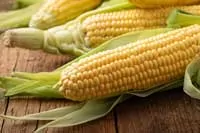
2. Peppers
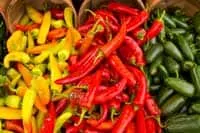
Plants should be planted following the last spring frost spaced at 18”to 24” apart in full sunlight in well-drained soil.
Mix compost and other organic matter with the soil and apply water straight after planting.
3. Potatoes
This once famine crop has been elevated as the main dish serving at every meal. They also store well.
Use 5-gallon buckets or bags for growing and harvest when plants turn yellow and die.

4. Carrots

A great addition to your vegetable crops, carrot has a sweet, crunchy flavor.
It is packed with antioxidants, minerals for the health of your eyes and general health.
5. Broccoli
You can plant the seed of this winter plant in small pots.
Later you can transplant them to your survival garden bed when they are 5 weeks old mainly during spring.
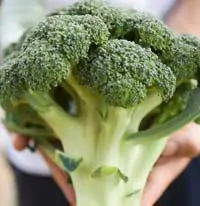
6. Cabbage

The cabbage is a highly nutritious crop for the body packed with vitamins and fiber. They also store well.
It is a great choice for you to add to your survival garden.
7. Onions
Onions add flavor and nutrition to whatever is being cooked.
Its unique taste and aromatic presence is universally noticed in any cooked dish.

8. Swiss Chard
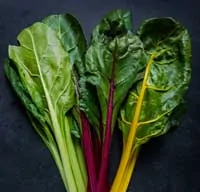
Very rich and well-drained soil is favored by this plant plus full sunlight and light shady spots.
Seeds may be sown in early spring to midsummer (winter crop) and fall to spring for a summer crop.
9. Bush Beans
Bush bean seeds are planted 1-½ inches deep and 3 inches apart.
More bean plants mean a larger spacing of 18” to 24” between seedlings.
Seed germination usually occurs after 1 to 2 weeks.
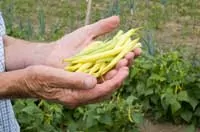
10. Pole Beans
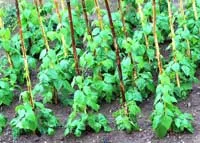
Seeds should be planted at 1” deep but on hills 4 to 6 seeds are planted at regular intervals in a circular position.
Water is applied to drench the soil at a depth of 2” to 3” with germination in 1 to 2 weeks.
11. Spinach
Similar to kale, spinach is packed with essential vitamins and minerals but is difficult to find in survival gardens.
You can freeze, grind to powder and dry for later use.
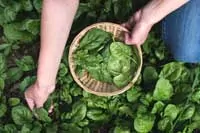
12. Radish
Radishes are known to be very simple to plant and have proven capable of providing a non-stop harvesting spree for a few months at a time.
They are packed with essential vitamins and minerals.

13. Garlic
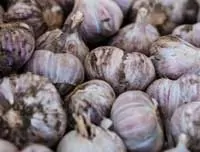
Garlic also loves to be planted in rich well-drained soil in mid-autumn spaced at 4”- 6” apart in rows set at 1-½” between each row.
Garlic has many medicinal and antibiotic properties. They also store well.
14. Lettuce
Ideally 10 seeds per foot should be used when you plant directly into the soil.
The rows should be a foot to 18” apart to allow for plant size.
Romaine and butterhead lettuce are spaced wider.
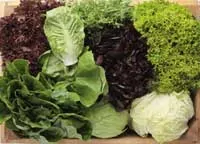
15. Beets

The beetroot is another vitamin and sugar packed vegetable that’s easy to grow in any survival garden.
The greens are edible as a secondary source of food for your family. They also store well.
16. Peas
Perfect for long term storage. The choice here is having frozen peas in plastic bags or peas fresh from their pods.
Whichever you choose they both taste great.
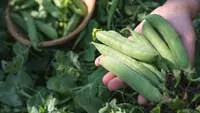
17. Squash
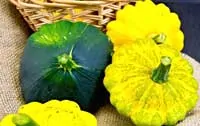
You should plant winter squash and summer squash varieties.
Summer squash grows fast which is ideal while winter squash takes longer to grow well but stores longer.
18. Tomatoes
Tomatoes are great, tasty ingredients in soups and stews and the popular ketchup.
Plants produce a fruit bounty so it’s a must to have in your survival gardens.
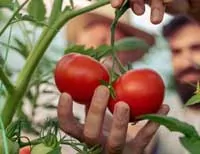
19. Eggplant

Eggplants are also easy to plant in locations with long and warm summers.
A useful indicator is that if you can grow peppers, you can also grow eggplants.
20. Cucumber
Whenever cucumbers are bountiful and grow fast, planting them becomes pure joy.
Plants are simple to grow directly under sunlight in moist and fertile soil.
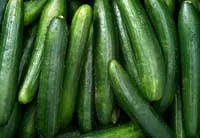
21. Melons

Melons can literally light up summertime with their delicious taste and bounty of honeydew, cantaloupes, and other varieties.
22. Strawberry
Strawberries are easy to grow out of all the berries. They are sweet and tasty with a bright red color.
Much like their berry cousins are full of antioxidants.
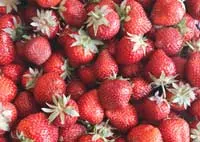
23. Turnips
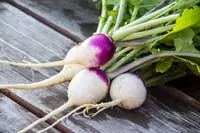
Turnips are a powerhouse for the body. They literally ooze with vitamins (A,C, E and K, omega-3s and host of other minerals.
They strengthen vital body parts and both root and greens are edible.
24. Sweet Potatoes
While sweet potatoes look similar to ordinary potatoes they are not the same.
They are packed with calories but are more nutritious and have a fantastic flavor than potatoes. Their greens are also edible.
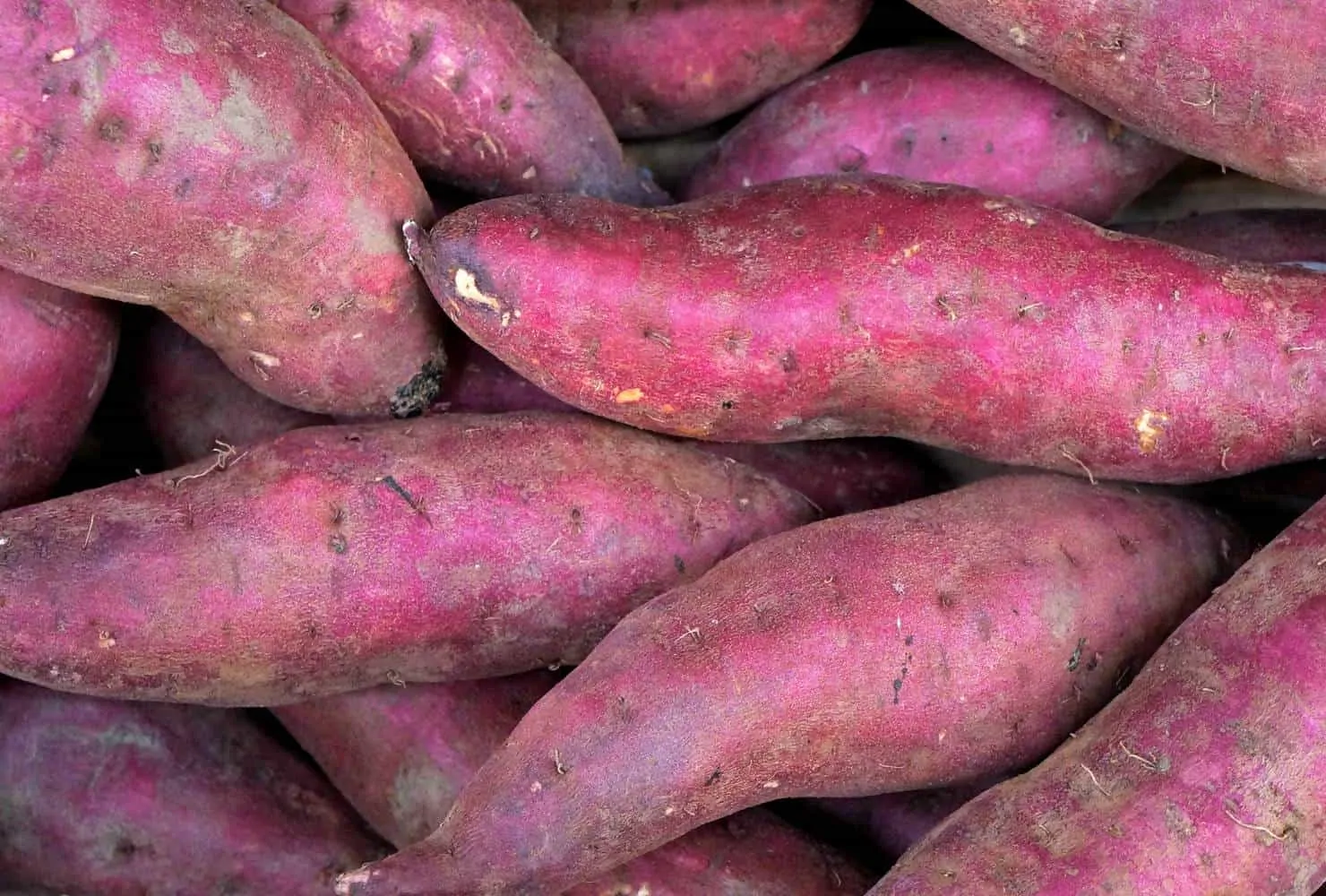
25. Kale

Planting kale involves planting seeds ¼ to ½ inches in light, well-drained soil for good growth.
Thin out your seedlings after 2 weeks so that you have them at 8” to 12” apart for better growth.
What about Containers for Survival Gardens?
In addition to the square foot method, you can also grow any vegetable in containers but you must do it right to get the desired results, especially if you are a beginner.
A good way to fit this same model is to ensure you have a large enough container. The 14-15 inch diameter container is a good one to choose as you can easily use the same square foot layouts.
To help you do this, here are some tips to help you put your best leg forward for your survival gardening utilizing containers.

Further Reading
The Right Amount of Light and Temperature
Like us, plants have their sensitive spots and they depend on us to ensure that their health and longevity stay normal and we should therefore note the following:
- Most vegetables, if not all, are lovers of sunlight so much so that they need six to eight hours of direct sunlight every day. Make sure that this is the case for your plants.
- Plants are also sensitive to cold soils so you must gradually acclimatize your plants before putting them outside permanently.
Watering Your Container Garden
Some vegetables such as tomatoes, zucchini and melons need plenty of water to grow normally but there’s no need to make the soil soaking wet.
Just ensure that it’s kept moist throughout. When unsure, test the condition of the soil with your finger about an inch down and add water if it’s dry.
Providing Optimal Drainage
- Soggy soil is anathema to the proper growth of your plants so proper drainage is critical, meaning that your containers should be able to release water from the bottom end.
- One or several holes should be present at the bottom to do this job.
Use Top Quality Potting Soil
High quality soil is a must for vegetables so never use garden soil because it compacts and drainage is bad in containers. Garden soil also means sprouting weeds which you didn’t want in the first place!
Our 3-2-1 Soil Mixture For Containers:
- 3 Parts Peat Moss or Coco Coir
- 2 Part Compost
- 1 part Vermiculite or Perlite
- 1/4 cup of garden limestone per gallon of peat moss
- ½ part of 5-10-5 fertilizer
Want to Download a Survival Garden Layout Plan
Enter your email below and we will send you a guide to help you with your survival garden layout.
Final Thoughts
Sometimes, prevailing circumstances overshadow the temptation to remain complaisant and inactive.
Things that threaten often signal us to be proactive in our outlook and address issues without giving way to fear and despondency.
If food shortage is the issue that needs to be grappled with the solution is at our fingertips – survival gardening.
So let’s dig into it with help from our garden layout and provide ourselves, family and those who need help with home grown food.








